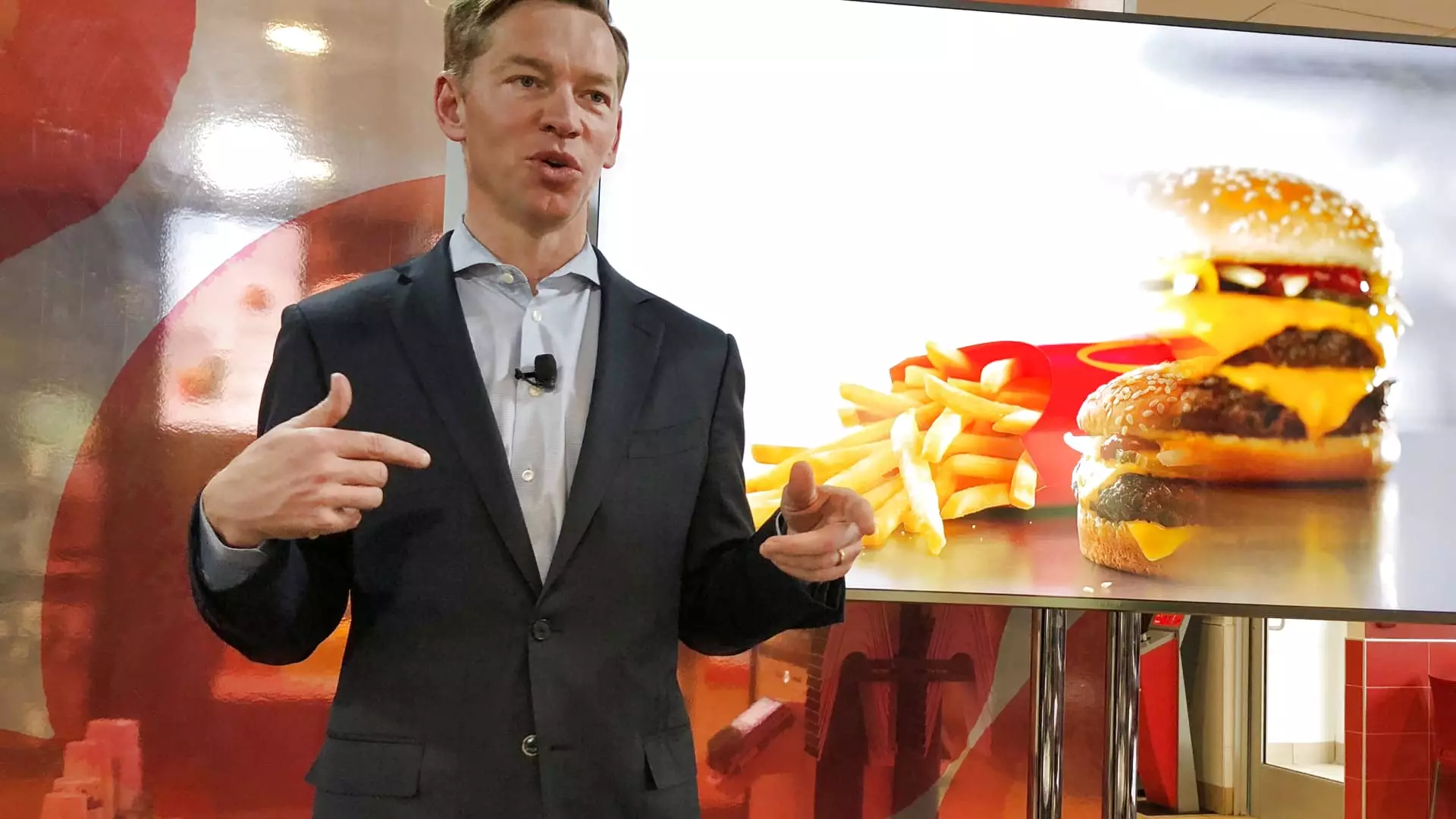The recent E. coli outbreak linked to McDonald’s Quarter Pounder burgers has raised significant health concerns among consumers and stakeholders alike. As public scrutiny intensified, McDonald’s leadership, represented notably by CEO Chris Kempczinski, faced the challenge of restoring consumer confidence while navigating the operational ramifications of the incident.
When the health authorities announced a connection between a deadly E. coli outbreak and the widely popular Quarter Pounder, the crisis was immediate. Negative consumer reactions led to a noticeable dip in daily sales and a drastic reduction in foot traffic to U.S. locations, as highlighted by CFO Ian Borden. It’s not unusual for fast-food chains to experience backlash during public health scares, but the speed of this downturn could serve as a cautionary tale for the industry regarding crisis management.
In the wake of the outbreak, McDonald’s promptly ceased sourcing onions from a supplier believed to be the source of contamination. This decision reflects the company’s commitment to consumer safety and their strategy to mitigate further issues. Approximately 900 restaurants began offering the Quarter Pounder without slivered onions to ensure compliance with health standards while simultaneously attempting to revitalize the brand’s image and product availability.
In a bid to reassure its customers, CEO Kempczinski expressed genuine concern for affected individuals and their families, emphasizing the company’s dedication to rectifying the situation. His remarks during the investor call reiterate a strong awareness of corporate responsibility even in the face of setbacks. A sincere apology can sometimes go a long way in public relations, and Kempczinski’s heartfelt message resonates with the company’s long-standing reputation, even amid turmoil.
Restoring consumer confidence became a strategic priority for McDonald’s. The challenge, however, is multifaceted. As public sentiment shifted negatively, the chain introduced promotional strategies, including a $5 value meal and the launch of the Chicken Big Mac, in order to reinvigorate interest and boost sales. These promotions are not just response tactics; they signify a crucial understanding of shifting consumer demands toward value-driven options, especially in an economy that many perceive as uncertain.
Financially, while McDonald’s reported a 0.3% increase in same-store sales during the third quarter, this figure slightly underperformed compared to industry expectations. The company managed to surpass Wall Street’s earnings and revenue projections, yet faced a 1.5% decline in overall same-store sales, particularly stark in international markets. These mixed results might indicate a balanced yet vulnerable position for McDonald’s, one that can swing based on consumer perception and external market pressures.
Investor confidence saw turbulence following the outbreak news, with shares dipping before stabilizing during the investor conference call. Stock variability in relation to public health crises is commonplace but demonstrates the tightrope that fast food brands walk in maintaining shareholder satisfaction while managing direct consumer relations.
As the E. coli outbreak investigation continues and lawsuits arise from victims affected by the contamination, McDonald’s faces a critical moment in its corporate journey. The company’s approach to handle the aftermath is a potential case study in crisis management. By focusing on communication, operational adjustments, and promotional strategies, McDonald’s illustrates a comprehensive multi-prong response plan.
The incident highlights the significance of rapid response, transparency, and a commitment to customer welfare in the fast-food industry. The effects of this outbreak may linger; however, through continued efforts to prioritize consumer safety and satisfaction, McDonald’s could potentially navigate this crisis and emerge with renewed credibility. Moving forward, the company must closely monitor consumer sentiment and adapt its practices and offerings accordingly, ensuring it not only meets but exceeds expectations in health and safety standards.


Leave a Reply